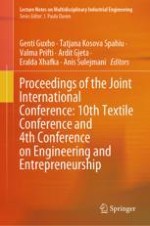This proceedings book encompass a wide range of significant topics within the realms of Technologies, Engineering, Management, and Production, Entrepreneurship, Materials, Textiles, Fashion, and more. The book delves into various areas of Energetics, exploring aspects such as power production, solar power, wind turbines, advanced energetics technologies, energy resource efficiency, global warming and emissions, clean and renewable energies, as well as economic development, global warming, and environmental protections. The Constructions and Transport section features discussions on numerical methods for data manipulation, construction science and technology, transport systems, modeling of transport systems, intelligent transport, traffic management and safety. The Materials segment addresses materials science and application, biopolymers and biotechnology, metallic and composite materials, metallurgical engineering, recycling, manufacturing, and processing of various materials such as paper, plastics, rubber, glass, ceramics, and more. Management and Production topics include technology management, logistic and supply chain management, total quality management, knowledge and innovation management, financial management, marketing research and strategy, industrial marketing, operational research, project management, as well as information technology in enterprises, e-activities, and e-commerce. The book also features an extensive section dedicated to Textiles, covering textile processing and testing, technological advances in the textile industry, ecology and environment in textile production, fiber physics and textile mechanics, finishing, dyeing, and treatment techniques, modeling and simulation, smart and interactive textiles, technical and protective textiles, textile design, fashion, and garment manufacturing, innovations in textile education, as well as leather and footwear technologies.
